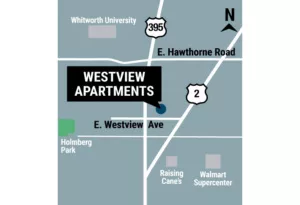
Home » Rural hospital execs expect more collaboration in future
Rural hospital execs expect more collaboration in future
Stronger ties with urban medical centers are likely during the next decade

February 16, 2012
We asked rural hospital administrators this question: What will be the most profound change in health care during the next 10 years?
Tom Martin, superintendent, Lincoln County Public Health District, Davenport, Wash.: One of the greatest challenges facing rural communities during the next 10 years will be how they retain local access to health care services. Growing shortages of medical professionals and rising public demand for health care to be more affordable and responsive to patients will create this challenge.
In response, rural communities and health care organizations will look to find ways to collaborate and partner more closely with larger health care systems.
These large organizations can provide rural facilities with greater access to pools of specialists and medical technology, as well as share significant benefits of economies of scale that just aren't available to smaller independent facilities.
Rural health care will see tremendous expansion in the use of telemedicine technology. This technology will bring an amazing array of specialists and technical support to the side of these patients in their local hospitals and clinics via robots and other "techy" telecommunication vehicles. These urban specialists will work in partnership with the local family practice physicians, assuring that the total health care needs of the rural patient are met.
In many cases, the patient will be spared the inconvenience and expense of having to travel outside their community to receive care that now can be delivered over virtual presence technology. Rural and urban physicians and hospitals will work together as a unified team, coordinating care to ensure the patient is provided the right care, at the right time, and at the most convenient location for the patient to receive the best outcome.
So the most profound change in rural health care in the near future will be the strengthening of the local health care community through stronger ties with urban systems. These partnerships will bring added resources, convenience, and bottom-line value to the rural patient in terms of cost, quality, and access. The future looks very promising for those rural communities that are preparing themselves for it by becoming a good prospective partner.
Harry S. Geller, administrator, Othello Community Hospital, Othello, Wash.: The advent of health reform and a shift away from volume toward value-based purchasing present a sea change in how rural (and urban) health care will be delivered, now and well into the future.
Small, rural hospitals long have been linchpins in their communities from both a health care and an economic perspective. They provide immediate access to primary care for people who live great distances from urban settings. Patients with heart attacks or strokes are stabilized for transport to larger urban hospitals. Rural hospitals save lives. Yet their viability is in doubt due to legislative proposals to eliminate Medicare and Medicaid cost-based reimbursement.
In 2010, our country's total health expenditures reached $2.6 trillion, which translates to $8,402 per person, or 17.6 percent of gross domestic product. By 2020, national health spending is projected to top $4.6 trillion, or 19.8 percent of GDP. We spend nearly twice as much per capita as other industrialized nations.
With government facing record deficits and debt, business confronting global competition, and people struggling to make ends meet, one has to ask whether these trends are sustainable. They are not.
What should we do? Dr. Don Berwick, former administrator of the Centers for Medicare and Medicaid Services, cites pursuit of what he calls the Triple Aim—better care for individuals, better health for populations, and lower per-capita costs—as key in transforming our health care system. We agree. One need only read articles penned by Dr. Atul Gawande to become enthused over the dramatic upside potential to enhance the quality of care while reducing cost.
Will independent, rural hospitals be sustainable in an era of diminished revenues? Perhaps not as inpatient facilities, but most certainly as high-tech rural outpatient care centers linked with larger, regional health systems that can provide a full continuum of care. The recently announced affiliation between Providence Health & Services and Swedish Health Services may be a harbinger of things to come.
Change is good. Reinvention is a challenge. But hospitals, rural and urban, are up to the task at hand to deliver high quality care at affordable cost.
Robert Campbell, chief administrator, Providence Mount Carmel Hospital, Colville, Wash.: Rural health care has gone through many transformations during the past 60 years. With the passage of the Hill-Burton Act in the 1940s, we were supported by federal grants to build hospitals in most small communities across America. In the 1960s, we saw expansion with the passage of Medicare (elderly) and Medicaid (poor) when they paid reasonable cost to all hospitals.
In the late 1980s and early1990s, the government changed the reimbursement system to a prospective payment which would set a fixed amount for specific diagnoses, called DRGs. This proved to be disastrous for small hospitals as they didn't have the volume to spread the fixed cost of providing services. This threatened rural hospitals and thus rural physician survival.
The response to that was the critical access payment methodology, which paid small rural hospitals cost plus 1 percent for Medicarepatients. This was also adopted by the Medicaid program. This program saved the access to care in most rural areas. With the budget deficits in the state and the nation, the payment method for small and rural hospitals is again questioned. As goes the payment methodology, so goes the access and quality to care for the citizens of the rural communities.
In the future, I expect America to be under extreme pressure to spend a competitive amount of the gross domestic product on health care, similar to the amount spent by the other industrialized counties. This means a leaning of the health care delivery process.
Secondly, I expect Medicare and Medicaid to take lead to make quality a base line of the service it purchases despite the setting.
Third, I believe that access to services in rural and poor areas will continue to be part of the federal effort, either government sponsored or private sponsored or both.
Fourth, I believe there will be a reshaping of the delivery system to ensure that duplicative services and redundancies are removed from both rural and urban markets, while still promoting the advantages of competition where it adds value to the delivery process.
Fifth, I believe wellness, prevention, ambulatory care, and outpatient services will be the focus and rewarded in sparsely populated areas. Sophistication will come to regional areas through consolidation, and economics and quality will be the driver. Consolidation will abound.
Latest News
Related Articles


